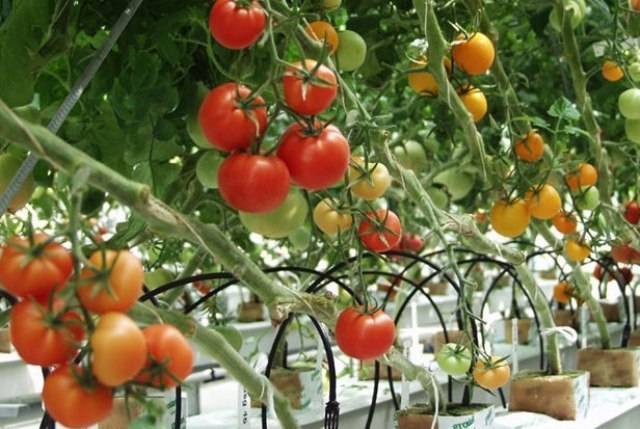
Tomato is a warm season crop, it requires warm and cool climate. The plants cannot withstand frost and high humidity. Also light intensity affects pigmentation, fruit colour, fruit set. The plant is highly affected by adverse climatic conditions. It requires different climatic range for seed germination, seedling growth, flower and fruit set, and fruit quality. Tomato (Solanum lycopersicum) is an economically important crop and a model species for genetics and fruit development.
Tomato is one of the world’s largest value vegetable crops, making it a research priority for crop scientists. Recently, yields have been adversely affected by cold spells, pests, and pathogens including bacterial speck disease. The new genome sequence offers the opportunity for innovative breeding programs that may hold the ability to confer S. lycopersicoides’ desirable traits to marketable tomato varieties.
The Boyce Thompson Institute’s Computational Biology Center (BCBC) in collaboration with RWTH Aachen University has released an annotated genome sequence for Solanum lycopersicoides, a wild relative of tomato. The genome has been assembled to near chromosome scale using Next Generation Sequencing (NGS) technologies. The S. lycopersicoides genome sequence and accompanying annotation provide valuable new information on traits that dramatically affect crop yields, such as pest/pathogen resistance and cold tolerance.
In 2004, an international consortium of 10 countries, gathered in the ‘International Solanaceae Genome Project’ (SOL), launched the initiative to sequence the genome of tomato.
The goal was to produce a high-quality sequence that would serve as an invaluable resource to both tomato researchers and breeders, and function as a reference genome for all Solanaceous species.
With the aid of revolutionary sequencing technologies, we have recently completed the genome sequencing. We employed a whole-genome shotgun approach using three second-generation sequencing technologies in combination with conventional Sanger sequencing. In pioneering a highly innovative assembly strategy, in which data from many different sources have been integrated, we have been able to produce a genome sequence of unparalleled quality. Currently the genome sequence is subjected to in-depth analysis to assign functions to all genes and to compare the genetic make-up to the closest wild progenitor (Solanum pimpinellifolium) of tomato, as well as to other Solanaceous and plant genomes.
The genome sequence is already actively used by researchers and breeders all over the world.
We are now extending genomic research in tomato by sequencing the genomes ~10 other tomato varieties, including two parents and one offspring line to study genomic rearrangements during hybridization.
While there is an extensive library of genomic information currently available for cultivated tomato, close relatives such as S. lycopersicoides encompass untapped genetic value for breeders and research scientists. S. lycopersicoides is notable for its ability to withstand cold weather and to resist infection by Pseudomonas syringae, the pathogen that causes bacterial speck.
Years of in breeding and domestication have caused cultivated tomato varieties to lose tremendous amounts genetic diversity. Because wild varieties have not gone through these bottlenecks, they retain much of this diversity.
“S. lycopersicoides retains several economically valuable traits, representing a wealth of genetic knowledge that does not exist in cultivated tomato and thus is not immediately available to scientists” says Susan Strickler, who was involved in the project and is Director of the BCBC.
The differences between the cultivated and wild species make it difficult to map wild tomato genes to the traditional tomato reference genome. The team used high-quality PacBio sequence alongside RNA sequence and transcriptome data to assemble and annotate the new genome.
Moving forward, the BCBC will work with collaborators to develop mapping populations for the characterization of economically important traits that directly affect crop yields. The information therein will be valuable for diverse stakeholders including research scientists, breeders, growers, private corporations, and ultimately, consumers.















